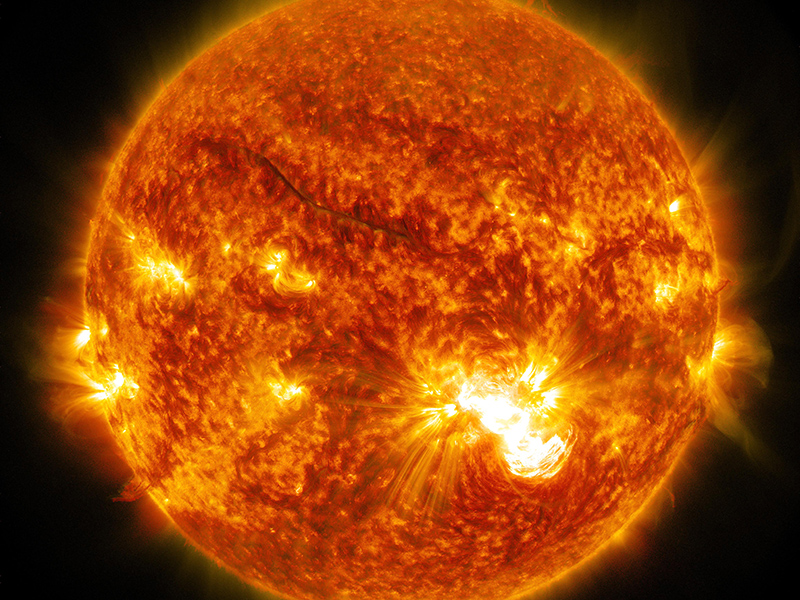Borexino experiment: analysis of ten years of neutrino signals
Comprehensive assessment of the Sun’s fusion processes

According to the standard solar model, around 99 percent of the Sun’s energy stems from a sequence of fusion processes in which hydrogen is converted to helium. It begins with the fusion of two protons into a heavy hydrogen nucleus, a process aptly called the pp chain. In some of these processes, neutrinos of characteristic energies are also released, allowing the progression of the pp chain to be reconstructed very accurately.
First overall assessment of the Sun’s neutrino spectrum
Buried deep in the mountains of the Italian Gran Sasso massif, the Borexino experiment, which focusses on detecting these solar neutrinos, has been running since 2007.
The Borexino scientists are now presenting, for the first time, a comprehensive investigation of the fusion processes in the pp chain via neutrinos. They determined the interaction rates of the individual processes with unprecedented precision.
The results substantiate the solar model
"All in all, the results confirm our theoretical perceptions of what goes on inside the Sun," says Prof. Stefan Schönert, Professor of Experimental Astroparticle Physics and Co-Spokesperson of the Collaborative Research Center 1258 at the Technical University of Munich and member of the new ORIGINS Cluster.
The Borexino scientists also calculated the Sun's energy production rate and compared this to the well-known estimate based on the Sun's electromagnetic radiation. The two values are in good agreement. This shows that solar activity has been constant for at least one hundred thousand years, which is how long it takes sunlight to leave the energy production zone inside the Sun. Neutrinos, in contrast reach the Earth in only 8 minutes.
What is the chemical composition of the Sun?
The Borexino results also provide an interesting clue to a previously unresolved solar mystery: What is the concentration of nuclei heavier than hydrogen and helium, the so-called metallicity? The higher the concentration of heavy nuclei, the more light is absorbed. This influences the temperature, size, brightness and life of the Sun.
To date, the Sun was assumed to have low metallicity. "Our results now indicate a solar temperature profile that suggests high metallicity," summarizes Prof. Lothar Oberauer of TUM and one of the founding members of the Borexino experiment.
Publication:
Comprehensive measurement of pp-chain solar neutrinos
M. Agostini, K. Altenmüller, S. Appel et. al.
Nature volume 562, pages 505–510 (2018),
DOI: 10.1038/s41586-018-0624-y
More information:
- The Borexino experiment is operated and funded by an international consortium. In addition to the Technical University of Munich, the Institute of Nuclear Physics at Forschungszentrum Jülich, the Institute for Experimental Physics at the University of Hamburg, RWTH Aachen University, the Cluster of Excellence PRISMA and the Physics Institute of the Johannes Gutenberg-University Mainz as well as the Faculty of Physics of the Technical University of Dresden are involved in Germany.
- The Borexino program is funded by the INFN (Italy), the NSF (USA), the German Federal Ministry of Research, the German Research Foundation, the Helmholtz Association of German Research Centers and the Max Planck Society (Germany), the RFBR, the RSF (Russia) and NCN (Poland).
- Website Borexino Experiment: http://borex.lngs.infn.it
- Nature news and views: Solar neutrinos reveal how the Sun shines
Contact:
Chair of Experimental Astroparticle Physics
Technical University of Munich
Prof. Stefan Schönert
E-Mail: schoenert@ph.tum.de
Tel.: +49 89 289-12511/12522
Prof. Lothar Oberauer
E-Mail: oberauer@ph.tum.de
Tel.: +49 89 289-12509/12522